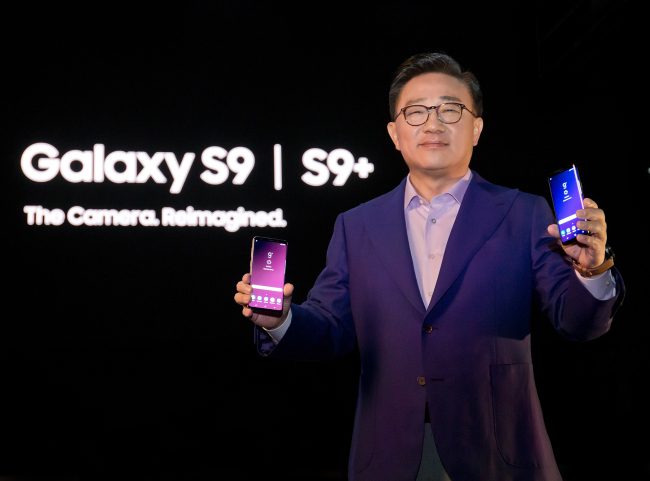[더인베스터(코리아헤럴드)=김영원기자] 삼성전자의 올해 스마트폰 출하량 목표 달성이 어려울 것으로 보인다. 소식통에 따르면 올해 초 3억 2천만대의 출하량 목표치를 세웠던 삼성전자는 초반 다소 양호했던 갤럭시 S9의 사전주문 및 출하량에 힘입어 목표치를 3억 5천만대로 상향조정했던 것으로 알려졌다.
“삼성전자가 최근 스마트폰 출하량 목표치를 3억 5천만대로 세웠었다,”고 전한 업계 관계자는 “중국을 포함한 글로벌 시장에서의 스마트폰 수요 감소와 갤럭시 S9의 기대에 못 미치는 성적 때문에 목표 달성은 힘들 것,”이라고 전했다.
최근 급성장하고 있는 중국의 스마트폰 업체들과의 경쟁, 수요 감소 등 복합적인 이슈들로 인해 선두 스마트폰 업체인 삼성과 애플이 어려움을 겪고 있는 상태이며, 이런 상황에서 3억 5천만대의 목표는 현실적으로 쉽지 않을 것으로 보인다.
 |
고동진 삼성전자 IM부문 대표이사 |
<영문 원본 기사>
Samsung to miss 350 million smartphone shipment goal
[THE INVESTOR] Samsung Electronics is likely to miss its annual smartphone shipment goal of 350 million units, according to those close to the matter.
“Samsung's goal this year is 350 million units, which is higher than originally reported, and considering the lower-than-expected sales of the Galaxy S9 and its struggling mobile business in China, the figure appears to be a far-fetched goal,” an industry source briefed on the matter told The Investor
Samsung’s initial plan was to ship 320 million smartphone units, but with the robust preorders of the S9 in the first quarter this year, the firm moved up its goal.
Top-tier smartphone makers, including Apple and Samsung, have been suffering dwindling smartphone demand in the past couple years due to high market penetration and the growing presence of high-performance budget handsets from China.
Samsung’s 350 million is higher than the firm’s actual shipment volume over the past several years.
The Korean tech giant shipped 319.7 million units in 2015, 309.4 million in 2016 and 319.8 million in 2017, according to reports by research firm Strategy Analytics. In the first quarter this year, it shipped around 78 million smartphones.
“Samsung’s smartphone shipment in the second quarter will likely be 73 million for the April-June period, with the S9 and its variant S9 Plus underperforming in terms of shipment volume,” said Noh Geun-chang, an analyst from HMC Investment & Securities.
The S9 maintained a relatively stable shipment level in the first quarter, but it is forecast to record lower-than-expected sales in the second quarter with its overall annual sales reaching some 30 million -- the lowest among the Galaxy S series since 2012.
Consequently, the mobile division’s profit performance in the second quarter will likley be largely disappointing.
Both Shinhan Investment and Korea Investment & Securities forecast the smartphone unit will post 2.3 trillion won in operating profit, down 43.3 percent from a year earlier while EBEST Investment & Securities expected an operating profit of 2.25 trillion won.
Pressed by competition from rising Chinese handset makers and archrival Apple, the top brass at the mobile division of the tech giant, including CEO Koh Dong-jin, are said to be urging Samsung marketing and sales teams to go all out to boost sales.
Samsung’s market share in China shrunk from nearly 20 percent in 2013 to less than 1 percent last year. In a bid to rejuvenate its operations in the country, the firm has replaced the heads of Chinese offices and streamlined its subunits there.
The foldable smartphone, which has been in the pipeline for years, is one of the measures Samsung hopes will turn things around. However, some critics said the foldable phone will likely be too pricey, at some US$1,500 or higher, making it hard to be accessible to average customers, and the anticipated production volume will be too small to improve profits.






![[Today’s K-pop] Blackpink’s Jennie, Lisa invited to Coachella as solo acts](http://res.heraldm.com/phpwas/restmb_idxmake.php?idx=644&simg=/content/image/2024/11/21/20241121050099_0.jpg)
